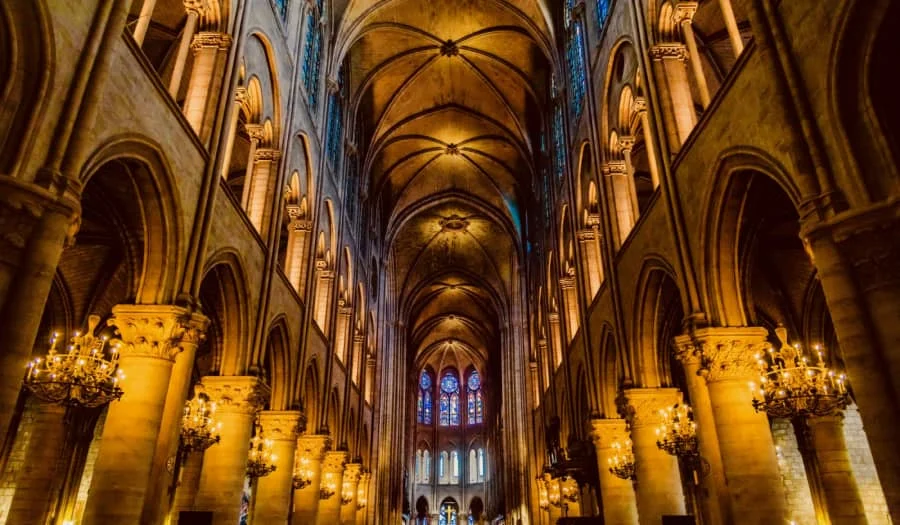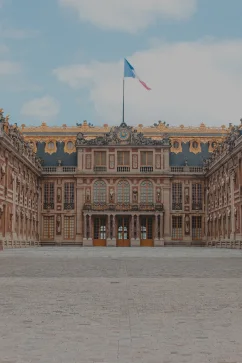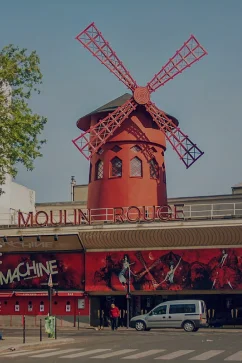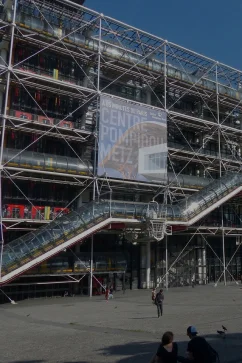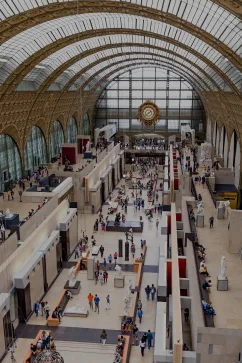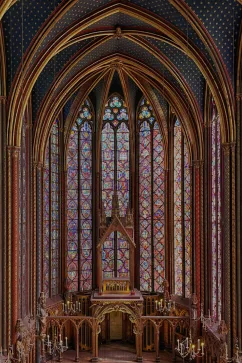Notre Dame
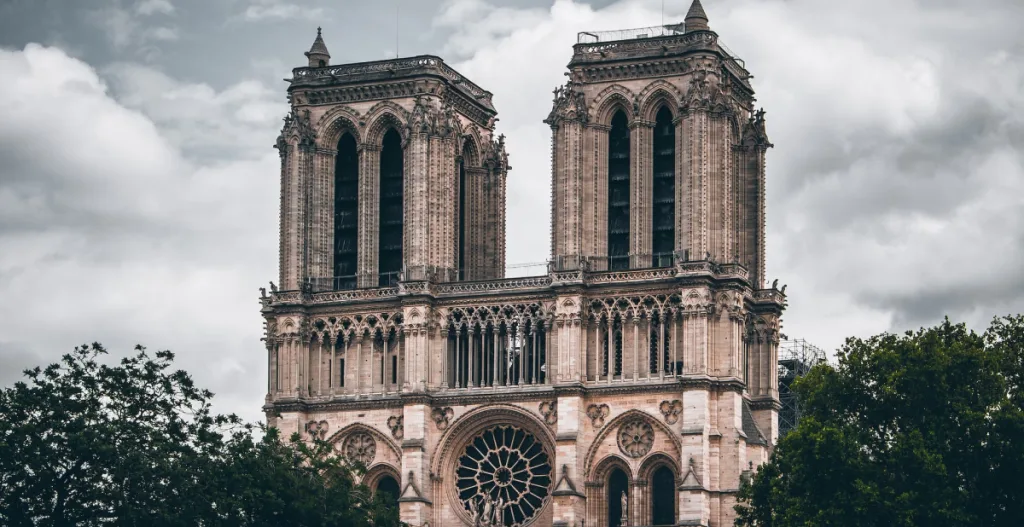
About the Notre Dame
Notre Dame, known as “Our Lady” in English, is a historic cathedral that stands as an emblem of Paris. The spectacular Notre Dame architecture serves as a beacon of spirituality and artistry for centuries reflecting the Gothic culture. The intricate details of the facade and the soaring towers of the cathedral also commonly known as Notre Dame Basilica evoke a sense of wonder. The famed gargoyles, perched atop the structure, add a mysterious touch.
Stepping inside Notre Dame Cathedral is like stepping in a peaceful haven of tranquility. The sunlight streaming through the vivid stained glass windows paints a mesmerizing mosaic on the stone floors. The interior’s magnificence, filled with sculptures and exquisite decorations, displays the passion of innumerable artists who worked on it. It’s a space where history, art, and culture intertwine, inviting visitors to reflect and admire the beauty of this cultural basilica.
Notre Dame has weathered the test of time, witnessing historical events and inspiring generations. It’s a place of pilgrimage for both tourists and worshippers, an ocean of stories and symbols. Despite the challenges it has faced, including the tragic fire in 2019, Notre Dame now stands resilient, a symbol of hope and restoration. Its ongoing reconstruction ensures that its legacy will continue to shine brightly for future admirers to cherish.
History of the Notre Dame
Notre Dame’s history is a captivating journey through time and faith. Construction began in 1163 during the reign of King Louis VII, and it took nearly 200 years to complete. The cathedral’s Gothic architecture reflects the height of medieval craftsmanship and devotion.
Over centuries, Notre Dame witnessed pivotal events. It held coronations and royal marriages, and it also played an important part in Parisians’ religious lives. During the French Revolution, the cathedral suffered damage and was repurposed. It wasn’t until the 19th century that architect Eugène Viollet-le-Duc undertook a restoration that brought Notre Dame back to its former glory.
Tragedy struck in 2019 when a devastating fire ravaged the roof and spire. The world watched in sadness as this famous emblem of Paris was destroyed. The incident sparked global support for Notre Dame’s restoration, highlighting the cathedral’s universal significance.
Today, ongoing efforts to restore Notre Dame echo the resilience of the human spirit and our determination to preserve cultural heritage. The history of the cathedral is a rich tapestry weaved with faith, craftsmanship, and the eternal relationship between people and this architectural wonder.
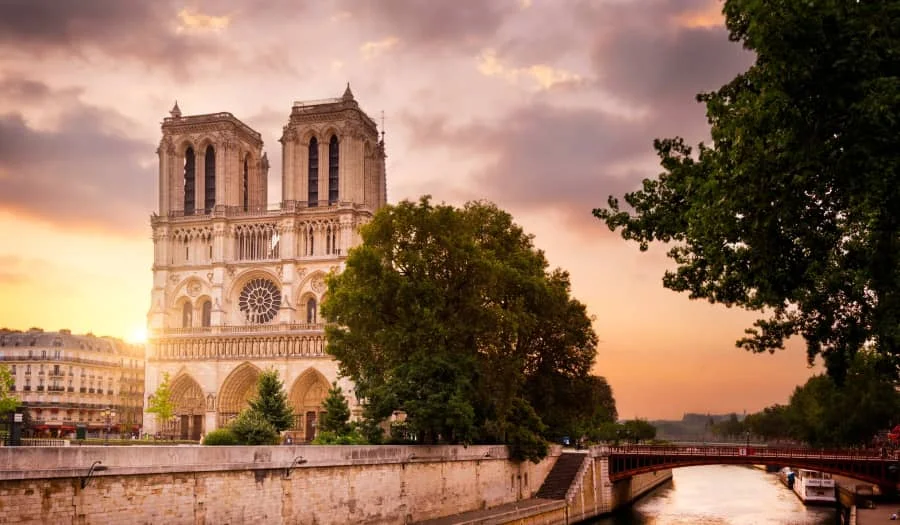
Tips for your visit
- Tickets and Hours: Check Notre Dame opening hours and consider guided tours for insightful information. Entry is usually free, but donations are appreciated.
- Appreciate Architecture: Marvel at Notre Dame’s architecture—Gothic spires, intricate façade, and rose windows reveal its beauty.
- Weekdays: Visit on weekdays for potentially fewer visitors compared to weekends.
- Notre Dame Gargoyles and Sculptures: Look up to spot unique Notre Dame gargoyles and sculptures on the cathedral’s exterior.
- Inside the Notre Dame: Step inside to admire its grandeur—high ceilings, stunning stained glass, and a serene ambiance.
- Respect and Silence: Maintain a respectful demeanor inside, as it’s a place of worship. Silence your phone.
- Photography: Capture memories, but be mindful of the solemn surroundings.
- Guided Tours: Opt for guided tours to learn about Notre Dame’s history, architecture, and restoration.
- Explore at Île de la Cité: Stroll around Île de la Cité, the island where Notre Dame stands, to absorb its unique atmosphere.
- Climb the Towers: If open, consider climbing the towers for panoramic views of Paris.
- Crypt Visit: Explore the archaeological crypt to learn about the island’s history.
Tickets
If you wish to enter the cathedral, there is no need to book Notre Dame tickets. Entry to Notre Dame Cathedral is free for all, including adults and children. However, a fee is applicable if you plan to visit Notre Dame Tower and Crypt. Enjoy the architectural marvel and historical significance of the cathedral without any admission charges.
Please note that due to the fire in 2019, the cathedral will open its doors to visitors once again in 2024, allowing everyone to witness its timeless beauty and significance.
How to arrive
Notre Dame location: 6 Parvis Notre-Dame – Pl. Jean-Paul II, 75004 Paris.
Arriving at Notre Dame Cathedral is convenient using public transportation:
By Metro: The most effective and viable option is to take the metro. Take Line 4 to the “Cité” station, which is right by Île de la Cité where Notre Dame is located.
By RER: There is also a station specifically for Notre Dame on the RER. Take Line B or C to the “Saint-Michel – Notre-Dame” station, which is a short walk away.
By Bus: If you want to see the sights as you go to Paris, using the bus is a great option. Various bus routes stop near Notre Dame, including lines 21, 24, 27, 38, 47, 85, and more.
By Seine River: Enjoy a scenic boat ride on the Seine River to disembark near the cathedral.
